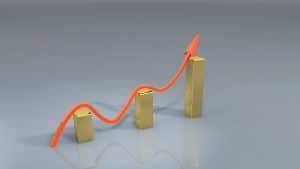While most seniors will turn to their investment portfolios and keep the equity in their homes, there is research that indicates a reverse mortgage as part of a retirement plan may offer an unexpected benefit by providing money for immediate use while giving their portfolio more of a chance to grow.2
A Home Equity Conversion Mortgage (HECM), commonly referred to as a reverse mortgage, is a Federal Housing Administration (FHA) insured loan3 that allows seniors who are 62 and older to access a portion of their home equity without having to make monthly mortgage payments.4 Proceeds from the loan can be received in a lump sum, monthly payments, or as a line of credit. With a HECM, any existing mortgage balance is paid off5 using the proceeds from the reverse mortgage loan.
Key Features of a Reverse Mortgage
- HECMs are available in fixed and adjustable rates, the line of credit option is only available through an adjustable-rate loan, and the lump sum option is only available with a fixed-rate loan.
- Most of the closing costs and fees associated with a reverse mortgage loan can be financed into the loan, so out-of-pocket expenses are kept to a minimum.
- A line of credit gives the borrower the flexibility to use at any time and in any amount until the line of credit is exhausted.
- A unique feature of a reverse mortgage is the line of credit growth rate. This means that the unused portion of the line of credit grows regardless of the home’s value.6
- Reverse mortgages are non-recourse loans that protect borrowers from ever having to pay back more than what the home is worth.
- With a HECM, the borrower doesn’t have to make any monthly mortgage payments.4
- Another option is a jumbo reverse mortgage which allows owners of high-valued homes that exceed the 2021 HECM limit of $822,375 access to more of the equity in their homes. Jumbo reverse mortgages aren’t insured by the FHA so some of the requirements might differ from HECM’s. Some jumbo reverse mortgages allow homeowners to access up to $4 million (varies by lender).
If you are interested in accessing your home’s equity with a reverse mortgage, call 800.976.6211 to speak with a licensed loan officer. A loan officer in your area, at your convenience, can assist in addressing your questions about how a reverse mortgage may work for you.
Disclosures:
1 https://www.cnbc.com/2021/05/12/consumer-price-index-april-2021.html
3 As required by the Federal Housing Administration (FHA), you will be charged an initial mortgage insurance premium (MIP) at closing and, over the life of the loan, you will be charged an annual MIP based on the loan balance.
4 You must live in the home as your primary residence, continue to pay required property taxes, homeowners insurance, and maintain the home according to Federal Housing Administration requirements.
5 Your current mortgage(s) and any other existing liens against the property must be paid off at or before closing. You must live in the home as your primary residence, continue to pay required property taxes, homeowners insurance, and maintain the home according to FHA requirements. Failure to meet these requirements can trigger a loan default that may result in foreclosure.
6 The reverse mortgage loan balance grows at the same rate as the available line of credit. Line of credit growth occurs and is only a benefit when a portion of the line of credit is not used. The unused line of credit grows over time and more funds become available during the life of the loan.
